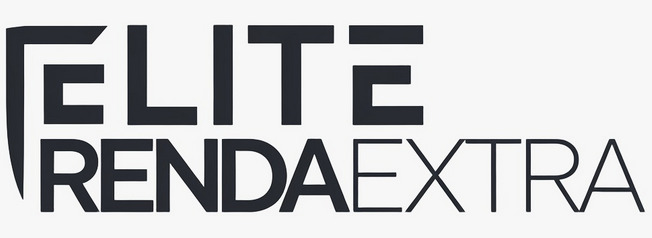Navigating the world of personal loans can feel overwhelming, with a multitude of lenders and offers vying for your attention. Finding the right loan isn’t just about getting approved; it’s about securing terms that align with your financial goals and won’t burden you unnecessarily in the long run.
This guide is designed to demystify the process. We’ll walk you through how to effectively compare personal loan offers, understand the critical factors at play, and ultimately, empower you to choose the best deal for your unique situation, saving you time, money, and potential headaches.
Why Comparing Personal Loans is Crucial
It might be tempting to jump at the first loan offer you receive, especially if you need funds quickly. However, taking the time to compare options is one of the most financially savvy moves you can make. The differences between loan offers can be substantial, impacting everything from your monthly payment to the total amount of interest you’ll pay over the life of the loan.
Failing to compare can mean paying hundreds, or even thousands, of dollars more in interest than necessary. It could also mean getting stuck with unfavorable terms, such as high origination fees or prepayment penalties, that you might have avoided with a bit more research. A thorough comparison ensures you understand the full cost of borrowing and helps you find a loan that truly fits your budget and financial objectives.
Key Factors to Consider When Comparing Personal Loan Offers
When you’re sifting through various loan proposals, certain elements demand closer inspection. Understanding these will guide you to a genuinely beneficial arrangement.
Annual Percentage Rate (APR)
The Annual Percentage Rate, or APR, is arguably the most important factor to compare. It represents the total annual cost of borrowing money, including the interest rate and most associated fees (like origination fees). A lower APR generally means a cheaper loan. Don’t just look at the advertised interest rate; always focus on the APR for a more comprehensive comparison of costs. It gives you a more holistic view of what you’ll actually pay.
Loan Term
The loan term is the length of time you have to repay the loan. Personal loan terms typically range from one to seven years. A shorter loan term means higher monthly payments but less total interest paid. Conversely, a longer loan term will result in lower monthly payments, making it more manageable for some budgets, but you’ll pay more interest over the life of the loan. Consider what monthly payment you can comfortably afford and how quickly you want to be debt-free. It’s a balance between monthly affordability and total cost.
Fees (Origination, Late Payment, Prepayment)
Beyond the APR, be vigilant about various fees, as these can significantly alter the overall expense of your loan:
- Origination Fees: Some lenders charge an origination fee, usually a percentage of the loan amount (e.g., 1% to 8%), to cover the cost of processing your loan. This fee is often deducted from the loan proceeds, meaning you’ll receive less than the full amount you borrowed. Always factor this into your calculations.
- Late Payment Fees: Understand the penalties for missing a payment deadline. These can add up quickly and negatively impact your credit. Life happens, but knowing these fees upfront is crucial.
- Prepayment Penalties: Some lenders charge a fee if you pay off your loan early. If you anticipate being able to repay your loan ahead of schedule, look for loans without prepayment penalties. This offers you flexibility without extra cost.
- Other Fees: Inquire about any other potential fees, such as insufficient funds (NSF) fees or check processing fees. Transparency from the lender is key here.
Loan Amount and Your Needs
Determine exactly how much money you need to borrow and stick to it. While it might be tempting to accept a larger loan if offered, borrowing more than necessary means paying interest on money you don’t need. Ensure the lenders you’re considering offer loan amounts that align with your requirements. A precise assessment prevents future financial strain.
Lender Reputation and Customer Service
The cost of the loan isn’t everything. Consider the lender’s reputation. Look for online reviews, check ratings with the Better Business Bureau (BBB), and see if there are frequent complaints about customer service or hidden fees. A responsive and transparent lender can make the borrowing experience much smoother, especially if issues arise.
Eligibility Requirements
Lenders have different criteria for borrowers. Common requirements include a minimum credit score, a certain income level, and a manageable debt-to-income ratio. Before formally applying, check the lender’s stated eligibility criteria to avoid unnecessary hard inquiries on your credit report if you’re unlikely to qualify.
Step-by-Step Guide to Comparing Personal Loans
Follow these steps to systematically evaluate your options and find the loan that’s right for you.
Step 1: Assess Your Financial Situation and Needs
Before you even start looking at lenders, take a clear look at your finances. Why do you need the loan? Is it for debt consolidation, a home improvement project, an unexpected medical bill, or another major purchase? Knowing the purpose will help you determine the right loan amount. Calculate how much you can comfortably afford for monthly payments without straining your budget. Review your income, expenses, and existing debts. This foundational step is critical.
Step 2: Check Your Credit Score
Your credit score is a primary factor lenders use to determine your eligibility and the interest rate you’ll be offered. Generally, a higher credit score qualifies you for lower interest rates and better loan terms. You can get a free copy of your credit report annually from each of the three major credit bureaus (Equifax, Experian, TransUnion) via AnnualCreditReport.com. Knowing your score beforehand gives you an idea of what types of loans and rates you might qualify for and if you need to take steps to improve it.
Step 3: Research Different Types of Lenders
Personal loans are offered by various financial institutions, each with its own pros and cons:
- Banks: Traditional banks often offer competitive rates, especially if you have an existing relationship with them. However, their approval criteria can sometimes be stricter, and the process might be slower.
- Credit Unions: As member-owned non-profits, credit unions may offer lower interest rates and more flexible terms than banks, particularly for members with less-than-perfect credit. They often prioritize member service.
- Online Lenders: Fintech companies and online-only lenders have become increasingly popular. They often provide a quick application process, fast funding, and competitive rates, sometimes catering to a wider range of credit profiles.
Explore options from each category to get a broad view of the market. Don’t limit yourself prematurely.
Step 4: Prequalify with Multiple Lenders
Many lenders offer a prequalification process. This typically involves providing some basic financial information, and the lender performs a “soft” credit check, which doesn’t impact your credit score. Prequalification gives you an estimate of the loan amount, interest rate, and terms you might receive if you formally apply. Aim to get prequalified with at least three to five different lenders to have a good set of offers to compare. This is like window shopping without commitment.
Step 5: Carefully Review Loan Offers (The Fine Print)
Once you have prequalified offers, don’t just glance at the headline interest rate. Scrutinize the loan agreement details or offer summary. Look for the APR, total repayment amount, monthly payment, loan term, and all associated fees (origination, late, prepayment). Understand the terms and conditions thoroughly. If anything is unclear, ask the lender for clarification. This is where the devil can be in the details.
Step 6: Use a Personal Loan Comparison Table
To make an informed decision, organize the key details from each loan offer into a comparison table. This will help you visualize the differences side-by-side, making it easier to spot the most advantageous offer for your specific needs.
Here’s an example of what your table might include:
| Feature | Lender Alpha | Lender Beta | Lender Gamma |
|---|---|---|---|
| Loan Amount Offered | $15,000 | $15,000 | $14,500 |
| APR | 6.9% | 7.5% | 6.5% (for $14.5k) |
| Loan Term | 48 months | 60 months | 48 months |
| Estimated Monthly Payment | $358.50 | $299.40 | $340.20 |
| Origination Fee | 1% ($150) | 0% | 2% ($290) |
| Prepayment Penalty | No | Yes (0.5% of balance) | No |
| Total Repayment (Approx.) | $17,208 | $17,964 | $16,329 (for $14.5k loan) |
Note: The figures above are purely illustrative. Your actual offers will vary based on your credit profile and the lender.
Step 7: Make Your Decision and Apply
After carefully comparing all aspects, choose the loan offer that best suits your financial needs and offers the most favorable terms overall. This isn’t always the one with the lowest APR if other factors, like a very high origination fee or an unsuitable loan term, make it less attractive. Once you’ve decided, proceed with the formal application process. This will typically involve a “hard” credit inquiry, which can slightly affect your credit score, so only do this once you’re confident in your choice.
Understanding Different Types of Personal Loans
It’s also helpful to know the basic categories of personal loans available.
Unsecured vs. Secured Personal Loans
Most personal loans are unsecured, meaning they don’t require you to put up collateral (like your car or house) to secure the loan. Lenders approve unsecured loans based on your creditworthiness (credit score, income, debt-to-income ratio). Secured personal loans, on the other hand, are backed by an asset. Because there’s less risk for the lender, secured loans might offer lower interest rates or be easier to obtain for borrowers with fair or poor credit. However, if you default on a secured loan, the lender can seize the collateral, so this option comes with greater risk to your assets.
Fixed-Rate vs. Variable-Rate Loans
The vast majority of personal loans come with a fixed interest rate. This means your interest rate, and therefore your monthly payment, will remain the same throughout the loan term, providing predictability for budgeting. This stability is highly valued by most borrowers. Some lenders might offer variable-rate loans, where the interest rate can fluctuate based on changes in a benchmark index rate (like the Prime Rate). While a variable rate might start lower than a fixed rate, it carries the risk of increasing over time, potentially making your payments unaffordable. For most borrowers seeking stability, a fixed-rate loan is the safer and more common choice.
Common Mistakes to Avoid When Comparing Loans
Navigating the loan comparison process can be tricky. Being aware of common pitfalls can help you secure the best possible deal and avoid future regret:
- Focusing Solely on the Interest Rate: While important, the interest rate doesn’t tell the whole story. Always compare loans using the Annual Percentage Rate (APR), which includes most fees and gives a truer picture of the cost.
- Ignoring Fees: Origination fees, late payment fees, and prepayment penalties can significantly impact the overall cost of your loan. Read the fine print carefully. These can turn a seemingly good deal into an expensive one.



